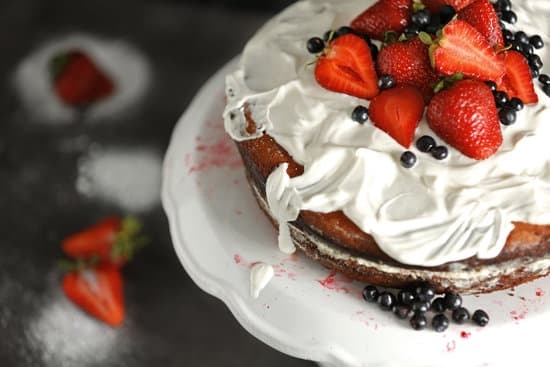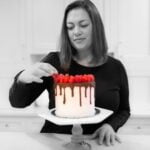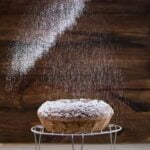Fondant has become a staple in the world of cake decorating, offering a versatile and professional-looking finish to any confection. Whether you’re a seasoned baker or just starting out, mastering the art of cake decor fondant can elevate your creations to new heights. In this article, we will delve into the basics of fondant and its crucial role in creating stunning cakes that are sure to impress both visually and taste-wise.
Fondant is a pliable icing that can be rolled out and draped over cakes for a smooth and flawless appearance. Its ability to hold intricate designs makes it a favorite among bakers looking to add personalized touches to their creations.
Understanding the different types of fondant available in the market, each with its own set of pros and cons, is essential in achieving the desired results when decorating cakes. From traditional rolled fondant to convenient pre-made options, there is a variety to choose from based on your preferences and needs.
Before diving into the world of fondant decorations, it’s important to have the right tools and materials at hand. From rolling pins to smoothing tools, having the necessary equipment can make the process smoother and more efficient.
In this article, we will not only provide a step-by-step guide on how to cover a cake with fondant but also explore various techniques for creating intricate decorations such as flowers, ribbons, and figurines. Stay tuned for insider tips on troubleshooting common issues that may arise when working with fondant and discover inspiration for your next fondant cake design endeavor.
Types of Fondant
Fondant comes in various types, each with its own unique characteristics and uses in cake decorating. One of the most common types is rolled fondant, which is easy to work with and provides a smooth finish when covering cakes. It is available in a wide range of colors and flavors, making it a versatile choice for decorators.
Another popular type is poured fondant, which is used for coating petit fours and creating glossy finishes on pastries. This type of fondant has a liquid consistency and can be heated to achieve the desired texture.
Modeling fondant, on the other hand, is firmer than rolled fondant and is specifically designed for creating intricate decorations such as figurines and sculpted designs. It holds its shape well once molded and is perfect for adding detailed elements to cakes.
There are also vegan-friendly options available for those who prefer plant-based ingredients in their fondant. These types of fondants are free from animal products like gelatin or dairy, making them suitable for a wider range of dietary preferences.
When choosing a fondant for your cake decorating projects, consider factors such as flexibility, taste, and ease of use. Some fondants may be better suited for certain techniques or designs than others, so experimenting with different types can help you find the perfect match for your needs. Regardless of the type you choose, working with fondant opens up endless possibilities for creative cake decorations that will impress your clients or guests.
| Type of Fondant | Characteristics |
|---|---|
| Rolling Fondant | Easy to work with, smooth finish |
| Poured Fondant | Liquid consistency, glossy finish |
| Modeling Fondant | Firmer texture, ideal for intricate decorations |
Tools and Materials Needed for Working With Fondant
Working with fondant requires the right tools and materials to ensure a successful cake decorating experience. Whether you are a beginner or a seasoned baker, having the appropriate supplies is crucial to achieve professional-looking results. Here is a list of essential tools and materials needed for working with fondant:
- Rolling pin: A non-stick rolling pin is essential for rolling out fondant to the desired thickness without sticking.
- Cake smoother: A cake smoother helps in achieving that flawless finish on the surface of the fondant-covered cake.
- Palette knife: A palette knife is useful for lifting and applying fondant to the cake, as well as smoothing out any wrinkles or air bubbles.
- Fondant shaping tools: These tools come in various shapes and sizes, perfect for creating intricate designs and decorations on your cakes.
In addition to tools, it’s important to have the right materials on hand when working with fondant. Here are some essential materials you will need:
- Fondant: Of course, you will need fondant in the color of your choice. You can either make your own marshmallow fondant or purchase pre-made fondant from stores.
- Cornstarch/powdered sugar: To prevent sticking, dust your work surface with cornstarch or powdered sugar before rolling out the fondant.
- Piping gel: Piping gel can be used as an adhesive for attaching decorations or securing layers of fondant together.
- Food coloring/gel paste: If you want to customize the color of your fondant, food coloring or gel paste will allow you to achieve any shade you desire.
By having these essential tools and materials at your disposal, you will be well-equipped to embark on your cake decorating journey using fondant. With practice and creativity, you can create stunning cakes that will impress friends, family, and clients alike.
Step-by-Step Guide to Covering a Cake With Fondant
Covering a cake with fondant is a great way to achieve a smooth and professional look for your baked creations. Whether you are a beginner or an experienced baker, mastering the art of applying fondant can take your cake decorating skills to the next level. In this step-by-step guide, we will walk you through the process of covering a cake with fondant for a flawless finish that will impress your friends and family.
Gather Your Supplies
Before you start working with fondant, it is essential to gather all the necessary tools and materials. You will need a freshly baked and cooled cake, a turntable, a rolling pin, powdered sugar or cornstarch for dusting, a sharp knife or pizza cutter, and of course, your rolled-out fondant. Make sure to prepare your work area by cleaning and drying it thoroughly to prevent any contamination during the decorating process.
Prepare Your Cake
To ensure that your fondant adheres smoothly to the cake without any bumps or wrinkles, it is crucial to prepare your cake properly. Start by leveling the top of your cake using a serrated knife or a cake leveler. Then, apply a thin layer of buttercream icing or simple syrup on the surface of the cake to help the fondant stick better. Allow the icing to set before moving on to the next step.
Apply the Fondant
Now comes the fun part – covering your cake with fondant. Roll out your fondant on a clean surface dusted with powdered sugar or cornstarch until it is about 1/4 inch thick and large enough to cover your entire cake. Gently lift the rolled-out fondant using your rolling pin and place it over the top of your prepared cake.
Smooth out any air bubbles or wrinkles by gently patting and smoothing the fondant with clean hands or a smoother tool. Trim off any excess fondant at the base of the cake using a sharp knife or pizza cutter for a neat finish.
By following these step-by-step instructions, you can achieve a beautifully covered cake with fondant that looks polished and professional. Practice makes perfect when it comes to working with fondant, so don’t be discouraged if your first attempt isn’t flawless – keep experimenting and refining your skills until you master this versatile cake decorating technique.
Fondant Decorations Techniques
Creating Fondant Flowers
One of the most popular decorations using fondant is creating beautiful flowers to adorn cakes. To make fondant flowers, you will need a few tools such as flower cutters, a rolling pin, and a foam pad. Start by coloring your fondant to the desired shades for your flowers.
Roll out the fondant thinly and use the flower cutter to cut out petals. Gently place each petal on a foam pad and use a ball tool to thin out the edges and create a realistic look. Layer the petals on top of each other, securing with edible glue, to form a gorgeous floral arrangement.
Designing Fondant Ribbons
Fondant ribbons are an elegant way to add sophistication to cake decoration. To create fondant ribbons, you will need a sharp knife or pizza cutter, as well as edible glue for attaching them to your cake. Roll out the fondant into a thin strip and use the knife to cut it into desired lengths for ribbons.
You can add texture by gently pressing lines into the ribbon with a toothpick or modeling tool. Allow the ribbons to dry slightly so they hold their shape before carefully placing them around your cake for a stunning finishing touch.
Sculpting Fondant Figurines
For those looking to take their cake decorating skills to the next level, sculpting fondant figurines is an impressive technique that can truly elevate any cake design. To make fondant figurines, you will need modeling tools, edible food colors for detailing, and patience for intricate work. Start by shaping the base of your figure with colored fondant and gradually adding details like facial features or clothing with smaller pieces of fondant.
Allow each piece to dry slightly before attaching it to ensure stability. With practice and creativity, you can sculpt charming figurines that will amaze your guests and clients alike.
Troubleshooting Common Fondant Issues
Working with fondant can be both fun and challenging. While this versatile cake decorating medium can create stunning results, it is not uncommon to encounter some common issues along the way. Understanding how to troubleshoot these problems can help prevent frustration and ensure a successful cake decor fondant experience.
Here are some common fondant issues you may come across while working on your cake decor project and how to address them:
- Cracking: Fondant cracking can occur if it is rolled too thin or if the cake underneath shifts during transportation. To fix this issue, gently smooth out the cracked area with a small amount of vegetable shortening or edible glue, then blend it back into place.
- Air bubbles: Air bubbles trapped between the cake and fondant can create unsightly bumps and bulges. To get rid of air bubbles, use a pin to puncture the fondant at an angle near the bubble, then gently press out the air and smooth down the area.
- Sticky fondant: If your fondant is too sticky, knead in a small amount of powdered sugar until it reaches the right consistency. You can also dust your work surface with powdered sugar or cornstarch to prevent sticking while rolling out the fondant.
Don’t let these common fondant issues derail your cake decorating dreams. With a little knowledge and practice, you’ll be able to troubleshoot any problems that arise and create beautiful cakes with confidence. Remember that practice makes perfect when it comes to mastering the art of cake decor with fondant.
Tips and Tricks for Successful Cake Decor With Fondant
Fondant is a versatile and popular choice for cake decorating due to its smooth finish and ability to create intricate designs. To achieve professional-looking cake decorations using fondant, there are several insider tips and tricks that can help elevate your creations.
One key tip is to ensure that your work surface is clean and properly dusted with powdered sugar or cornstarch to prevent the fondant from sticking. Additionally, it is essential to knead the fondant until it is pliable and smooth before rolling it out to cover the cake.
Another important tip for successful cake decor with fondant is to invest in high-quality tools specifically designed for working with this medium. This includes tools such as fondant smoothers, rolling pins, cutting wheels, and shaping tools that can make the process more efficient and precise. These tools can help you achieve clean edges, sharp lines, and flawless finishes on your fondant decorations.
When creating intricate designs with fondant, such as flowers, ribbons, or figurines, it is crucial to take your time and practice patience. Working slowly and meticulously will result in more refined and professional-looking decorations. Experimenting with different techniques and practicing regularly can also help improve your skills in handling fondant for cake decor.
| Tip for Successful Fondant Cake Decor | Details |
|---|---|
| Clean Work Surface | Ensure a clean work surface dusted with powdered sugar or cornstarch to prevent sticking |
| High-Quality Tools | Invest in tools like fondant smoothers, rolling pins, cutting wheels for precise decorations |
| Practice Patience | Take your time when creating intricate designs with fondants for better results |
Inspiration for Fondant Cake Designs
In conclusion, cake decorating with fondant opens up a world of endless creativity and possibilities. The art of using fondant to adorn cakes is not just about making them look visually appealing but also adding a touch of elegance and sophistication. Whether you are a beginner in cake decorating or an experienced baker, mastering the techniques of working with fondant can take your creations to the next level.
By experimenting with different types of fondant available in the market, understanding the essential tools needed, and following a step-by-step guide for covering cakes smoothly with fondant, you can create stunning masterpieces that will leave everyone in awe. From delicate flowers to intricate figurines, the techniques for crafting fondant decorations are varied and offer a chance for unlimited creativity.
While working with fondant may sometimes pose challenges such as cracking or air bubbles, troubleshooting these common issues becomes easier with practice and patience. By incorporating insider tips and tricks into your cake decorating process, you can ensure successful outcomes every time.
Let these showcased stunning fondant cake designs serve as inspiration for your next baking project and allow your imagination to run wild in creating your own unique and remarkable designs. Embrace the art of cake decor fondant and let your creativity shine through every confectionary creation.
Frequently Asked Questions
How to Make Fondant to Decorate a Cake?
Making fondant to decorate a cake involves combining marshmallows, water, and powdered sugar to create a pliable dough. The process includes melting the marshmallows, adding color if desired, then gradually mixing in the powdered sugar until a smooth consistency is achieved.
How Do You Attach Fondant Decorations to a Cake?
Attaching fondant decorations to a cake requires a small amount of piping gel or water applied to the back of the decoration with a brush. Lightly pressing the decoration onto the cake ensures it sticks securely without damaging the fondant surface.
How Far in Advance Can You Make Fondant Decorations for a Cake?
Fondant decorations for a cake can be made ahead of time to save on preparation stress. Ideally, these decorations can be made up to one month before they are needed. Storing them in an airtight container at room temperature keeps them in good condition until it’s time to use them on the cake.

Welcome to our cake decorating blog! My name is Destiny Flores, and I am the proud owner of a cake decorating business named Cake Karma. Our mission is to provide delicious, beautiful cakes for all occasions. We specialize in creating custom cakes that are tailored specifically to each customer’s individual needs and tastes.





